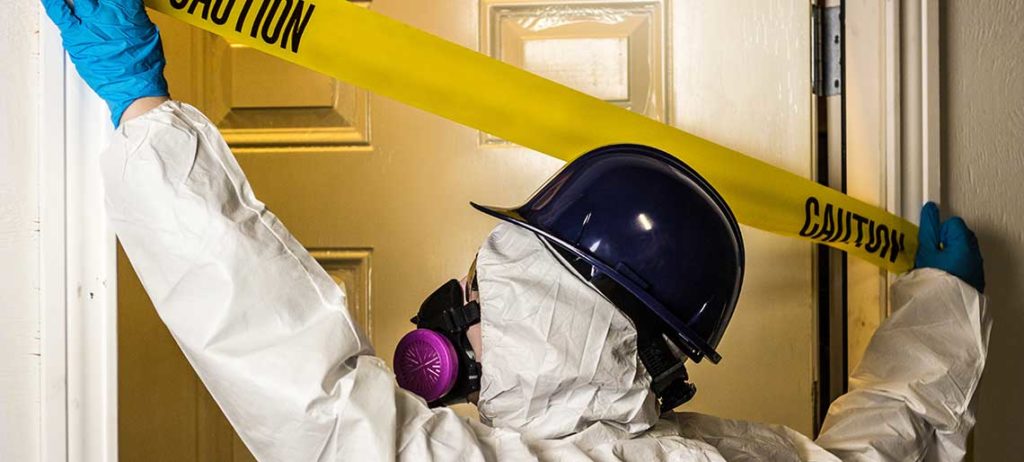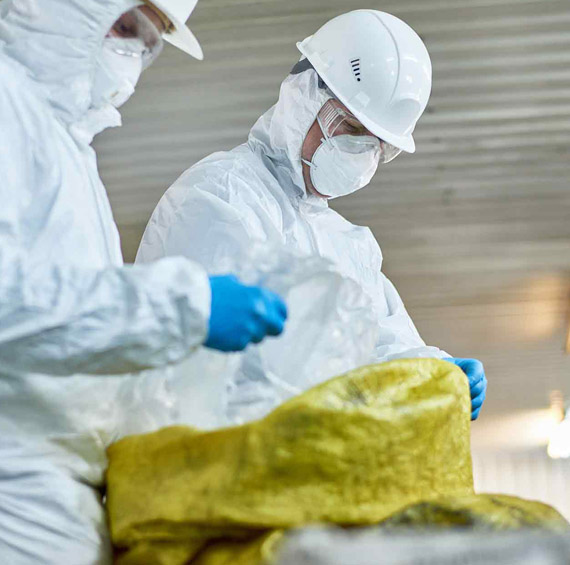Decomposition Death Clean Up: Specialized and Respectful Remediation
Wiki Article
Expert Biohazard Cleaning and Decontamination for Blood, Bodily Fluids, and Hazardous Products
The prospective health and wellness risks connected with exposure to biohazards emphasize the vital need for precise handling and detailed clean-up. As we navigate the complex landscape of biohazard cleanup, understanding the subtleties of guidelines, compliance, and the customized tools at play ends up being important in making sure a secure and extensive decontamination process.
Health Threats of Biohazard Direct Exposure
Exposure to biohazards postures substantial wellness threats that can result in severe consequences for communities and people alike. Biohazards encompass a variety of organic substances, including blood, physical fluids, mold, germs, infections, and various other possibly contagious products. When individuals enter call with these biohazards, whether with mishaps, improper handling, or ecological direct exposure, they encounter the risk of contracting severe health problems or illness.Among the key health and wellness dangers connected with biohazard direct exposure is the transmission of contagious illness. Bloodborne virus such as HIV, hepatitis B and C, and various microorganisms can be present in biohazardous products, positioning a direct danger to human health and wellness. Inhaling air-borne biohazards like mold spores or coming right into call with infected surface areas can likewise result in respiratory system concerns, allergic reactions, and other adverse health and wellness impacts.
In addition, biohazard direct exposure can have long-lasting wellness ramifications, with some illness manifesting years after the first contact (Blood Cleanup). Consequently, it is essential to focus on proper biohazard cleansing and decontamination to alleviate these health threats and make sure the safety of communities and people

Specialized Educating for Biohazard Cleanup
When it comes to dealing with biohazard cleanup effectively and safely, specialized training plays a fundamental function in making sure appropriate decontamination treatments are followed. Biohazard cleanup requires particular expertise and skills to successfully minimize risks related to bloodborne virus, physical fluids, and hazardous products. Professionals educated in biohazard clean-up go through strenuous guideline on just how to securely deal with, eliminate, and throw away biohazardous materials to stop contamination and exposure.Specialized training for biohazard cleaning covers a variety of crucial topics, including proper personal safety tools (PPE) use, bloodborne virus understanding, decontamination strategies, and harmful waste disposal procedures. People learnt biohazard cleaning are equipped with the essential expertise to evaluate contamination levels, recognize prospective hazards, and implement ideal cleaning treatments in compliance with regulatory standards.
Continuous training and education and learning are paramount in the area of biohazard clean-up to remain upgraded on the most recent decontamination innovations, safety procedures, and regulations. By investing in specialized training, biohazard clean-up specialists can effectively react to emergency situation clean-up situations and secure both public wellness and the environment.
Importance of Proper Decontamination Techniques
Making use of correct decontamination strategies is vital in biohazard cleaning to successfully get rid of dangerous products and lessen health and wellness risks. Efficient purification not just ensures the removal of visible traces of blood, physical fluids, and other biohazards yet also targets undetectable pathogens that might pose severe health and wellness risks if not correctly eliminated. By following strict purification procedures, educated experts can significantly minimize the danger of exposure to dangerous microbes, infections, and bacteria that could cause diseases or infections.Correct decontamination techniques involve the use of specific devices and disinfectants that are specifically designed to neutralize biohazards successfully. Detailed cleaning crime scene cleaner requirements and sanitation of infected areas are important to prevent the spread of microorganisms and ensure a secure environment for owners. Additionally, the right disposal of biohazardous waste adhering to decontamination treatments is crucial in preventing contamination of various other surfaces or individuals.

Equipment and Tools for Safe Clean-up
When dealing with blood, physical liquids, or unsafe products, biohazard cleaning specialists rely on specialized gear to minimize direct exposure threats and thoroughly sanitize the affected area. In addition, biohazard cleansing packages having disinfectants, absorbent products, and biohazard bags are made use of to securely consist of and dispose of polluted items.Advanced cleansing devices like hospital-grade disinfectants, HEPA-filtered vacuums, and misting equipments are used to disinfect surfaces and eliminate biohazards effectively. Specialized tools such as sharps containers and biohazard garbage disposal containers are made use of to securely handle sharp items and biohazardous waste materials. By making use of the best devices and devices, biohazard cleansing experts can make sure a thorough cleanup process that focuses on security and decreases wellness threats for both employees and passengers of the affected room.
Rules and Compliance in Biohazard Cleansing
Proper adherence to regulations and conformity criteria is paramount in biohazard cleaning to ensure the safety and security of both personnel and the environment. Federal government agencies such as OSHA (Occupational Safety And Security and Health And Wellness Administration) and the EPA (Epa) have developed certain guidelines for biohazard clean-up treatments to minimize health and wellness risks and ecological contamination. These guidelines cover an array of aspects including the handling, transportation, and disposal of biohazardous products, along with the essential training and safety equipment required for workers entailed in the cleanup procedure.Biohazard cleansing companies should remain current with these regulations to guarantee that their operations meet the needed safety and security criteria. Failure to abide by these policies can lead to extreme effects, consisting of fines, lawsuit, and jeopardizing the wellness of individuals and the environment. By following strict guidelines and conformity actions, biohazard cleansing business can properly minimize risks and guarantee a secure and extensive clean-up process for all events entailed.
Conclusion
In conclusion, biohazard cleansing and purification require customized training, appropriate techniques, and adherence to policies. Direct exposure to blood, go to this web-site physical fluids, and dangerous materials poses substantial health and wellness risks, making it essential to make use of the appropriate equipment and tools for risk-free cleaning. By following stringent methods and standards, professionals can successfully minimize the dangers connected with biohazard exposure and make certain the safety of both themselves and others.
As we browse the intricate landscape of biohazard clean-up, recognizing the subtleties of policies, conformity, and the customized equipment at play becomes imperative in guaranteeing a risk-free and comprehensive purification process. (Blood Cleanup)
When it comes to dealing with biohazard cleanup effectively and securely, specialized training plays a basic function in making go to this web-site certain correct purification treatments are adhered to.Using appropriate purification strategies is vital in biohazard cleaning to properly lessen and get rid of harmful materials health and wellness risks. Additionally, biohazard cleansing packages having anti-bacterials, absorptive materials, and biohazard bags are used to securely dispose and contain of infected things.
Government agencies such as OSHA (Occupational Safety And Security and Wellness Administration) and the EPA (Environmental Protection Firm) have actually established specific standards for biohazard clean-up procedures to decrease health and wellness risks and ecological contamination.
Report this wiki page